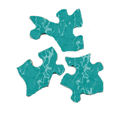Julie B.: Eighteen-Year-Old Pregnant Teen
Gretchen M. Sampson, RN, MPH
Director/Health Officer
Polk County Health Department
Balsam Lake, Wisconsin
Information Obtained During the First Visit/Encounter:
Julie B., 18 years old, was referred to the public health nursing clinic. She and her mother lived in a remote area of the county. Julie did not know about the eligibility criteria or application procedures for Native American tribal health services or other community programs. She relied on friends for transportation because the family vehicle needed repairs.
Julie completed a pregnancy questionnaire and met with a public health nurse. She was 20 weeks pregnant, her blood pressure was 140/92, and her weight was 170 pounds. Her reported height was 5’4”. She gained 30 pounds since becoming pregnant, had no visible edema, and had 1+ protein in her urine. She had seen a physician only once since her pregnancy was confirmed. The physician told her that she had nephrotic syndrome, but she did not know what that meant. The nurse described the syndrome, gave her materials, summarized signs of preterm labor, and explained the necessity of regular prenatal visits. The nurse arranged for transportation and an appointment at the tribal health clinic the next day where she would receive medical care and other services such as prenatal classes and medications.
The nurse and Julie also talked about her prescribed low sodium, low cholesterol diet. Although Julie drank “a little alcohol socially” previously, she reported no alcohol use since she knew she was pregnant. Julie reported that her mother rarely prepared balanced meals, and she often snacked on chips or ate dry cereal. The nurse referred Julie to a local food pantry, and the clinic’s Women, Infant, and Children’s program (WIC) and a nutritionist for detailed instructions about her prescribed diet. Julie told the nurse that she wanted to eat what she should, have a healthy baby, and be a good mother, but admitted that she knew little about pregnancy and parenting.
Julie and the nurse discussed her experiences with children and her feelings about pregnancy and parenthood. The nurse gave Julie a booklet and offered to show her a DVD about newborns during the next visit. Julie also asked the nurse to help her consider options for returning to school and completing her senior year. She missed her friends, and wanted to graduate with them. They agreed to discuss healthy pregnancy, parenting, community resources, and sources of support during future meetings scheduled at the clinic and Julie’s home.
Application of the Omaha System:
DOMAIN: PSYCHOSOCIAL
Problem: Communication with community resources (high priority)
Problem Classification Scheme
Modifiers: Individual and Actual
SIGNS/SYMPTOMS OF ACTUAL:
unfamiliar with options/procedures for obtaining services
difficulty understanding roles/regulations of service providers
inadequate/unavailable resources
educational barrier
transportation barrier
limited access to care/services/goods
Intervention Scheme
Category: Teaching, Guidance, and Counseling
TARGETS AND CLIENT-SPECIFIC INFORMATION:
continuity of care (many needs including pregnancy, nutrition, diagnoses, transportation,
limited support)coping skills (needed information and encouragement to obtain services/deal with needs)
medical/dental care (immediate need for pregnancy and diagnosis)
Category: Case Management
TARGETS AND CLIENT-SPECIFIC INFORMATION:
medical/dental care (scheduled appointment the next day at tribal health services)
transportation (arranged for transportation to tribal health services)
Category: Surveillance
TARGETS AND CLIENT-SPECIFIC INFORMATION:
continuity of care (adherence, status, adequacy)
Problem Rating Scale for Outcomes
Knowledge: 2-minimal knowledge (knew about clinic but not about other resources)
Behavior: 3-inconsistently appropriate behavior (used services some of the time)
Status: 2-severe signs/symptoms (needed more services, difficulty with transportation)
DOMAIN: PHYSIOLOGICAL
Problem: Urinary function (high priority)
Problem Classification Scheme
Modifiers: Individual and Actual
SIGNS/SYMPTOMS OF ACTUAL:
abnormal urinary laboratory results
Intervention Scheme
Category: Teaching, Guidance, and Counseling
TARGETS AND CLIENT-SPECIFIC INFORMATION:
anatomy/physiology (etiology, symptoms, complications of nephrotic syndrome)
signs/symptoms-physical (what to notice/when to notify provider)
Category: Case Management
TARGETS AND CLIENT-SPECIFIC INFORMATION:
medical/dental care (referral for syndrome and pregnancy)
Category: Surveillance
TARGETS AND CLIENT-SPECIFIC INFORMATION:
laboratory findings (proteinuria)
Problem Rating Scale for Outcomes
Knowledge: 1-no knowledge (did not know about nephrotic syndrome/how to manage it)
Behavior: 2-rarely appropriate behavior (did not have follow up care or follow diet)
Status: 3-moderate signs and symptoms (1+ proteinuria but no edema; elevated blood pressure)
Problem: Pregnancy (high priority)
Problem Classification Scheme
Modifiers: Individual and Actual
SIGNS/SYMPTOMS OF ACTUAL:
difficulty with prenatal exercise/rest/diet/behaviors
prenatal complications/preterm labor
inadequate social support
Intervention Scheme
Category: Teaching, Guidance, and Counseling
TARGETS AND CLIENT-SPECIFIC INFORMATION:
anatomy/physiology (age/pregnancy changes)
bonding/attachment (preparation for baby, instructional materials)
dietary management (low sodium/low cholesterol diet)
signs/symptoms-physical (danger signs of pregnancy and when to notify provider)
substance use cessation (alcohol)
Category: Case Management
TARGETS AND CLIENT-SPECIFIC INFORMATION:
medical/dental care (referred to tribal health services for medical care and medications)
nutritionist care: (referred to clinic nutritionist and food pantry)
Category: Surveillance
TARGETS AND CLIENT-SPECIFIC INFORMATION:
medical/dental care (little support; adherence, status, and adequacy of care/resources)
nutritionist care (little support; adherence, status, and adequacy of diet/resources/services)
signs/symptoms-physical (weight gain, proteinuria, vital signs, danger signs)
Problem Rating Scale for Outcomes
Knowledge: 2-minimal knowledge (expressed interest in learning about pregnancy)
Behavior: 2-rarely appropriate behavior (had not followed through with care)
Status: 3-moderate signs and symptoms (1+ proteinuria but no edema, elevated blood pressure)
DOMAIN: HEALTH-RELATED BEHAVIORS
Problem: Substance use (low priority: provide interventions and rate if evidence of substance use)
Problem Classification Scheme
Modifiers: Individual and Potential
RISK FACTORS:
Julie admitted to social drinking prior to pregnancy; no evidence that she is drinking now.
